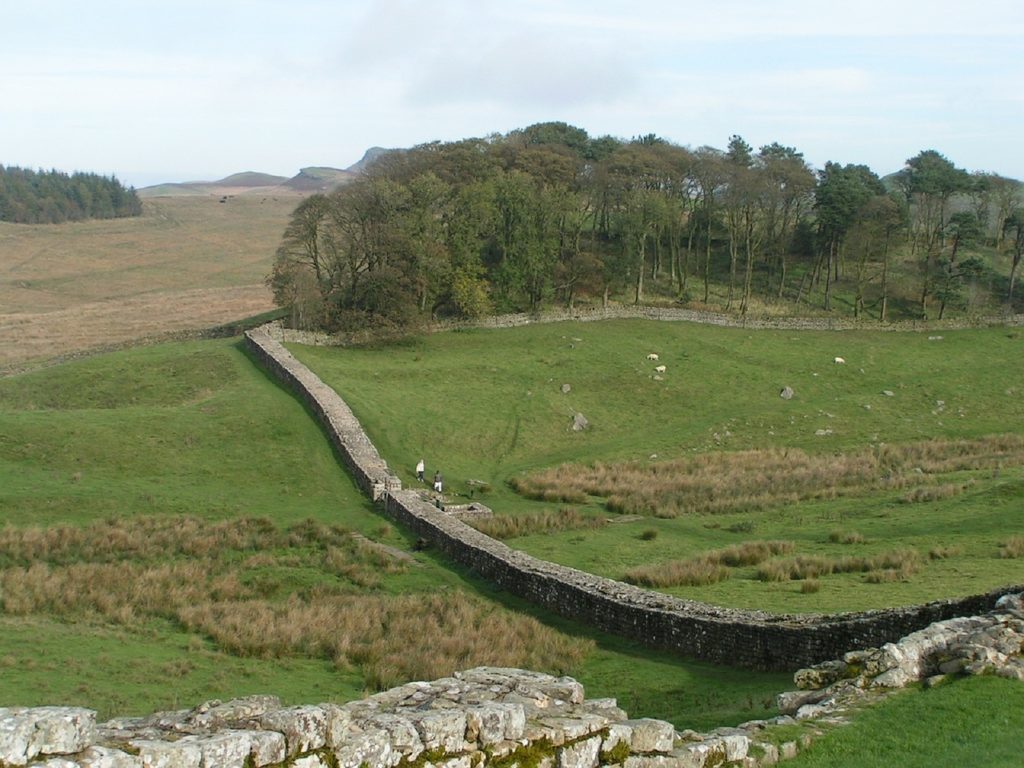Northumberland is one of England’s hidden secrets. Most people rush through on their way to Scotland. This is a shame as they miss so much. There are glorious empty beaches stretching for miles as well as the largest man made lake and man made forest in the country. Over the years, we have visited Northumberland many times. Each time we go back, it feels like going home. The Northumbrians are such friendly and welcoming folk. I love the wide open spaces, where I can relax and breathe again. It truly is God’s Own Country.
Northumberland has the lot and can truly be described as a microcosm of English history stretching from prehistoric times, the Romans, early Christian history, Border Reivers, to the industrial revolution and modern times. It has found the knack of combining old and modern. It is a county at ease with itself and its past.
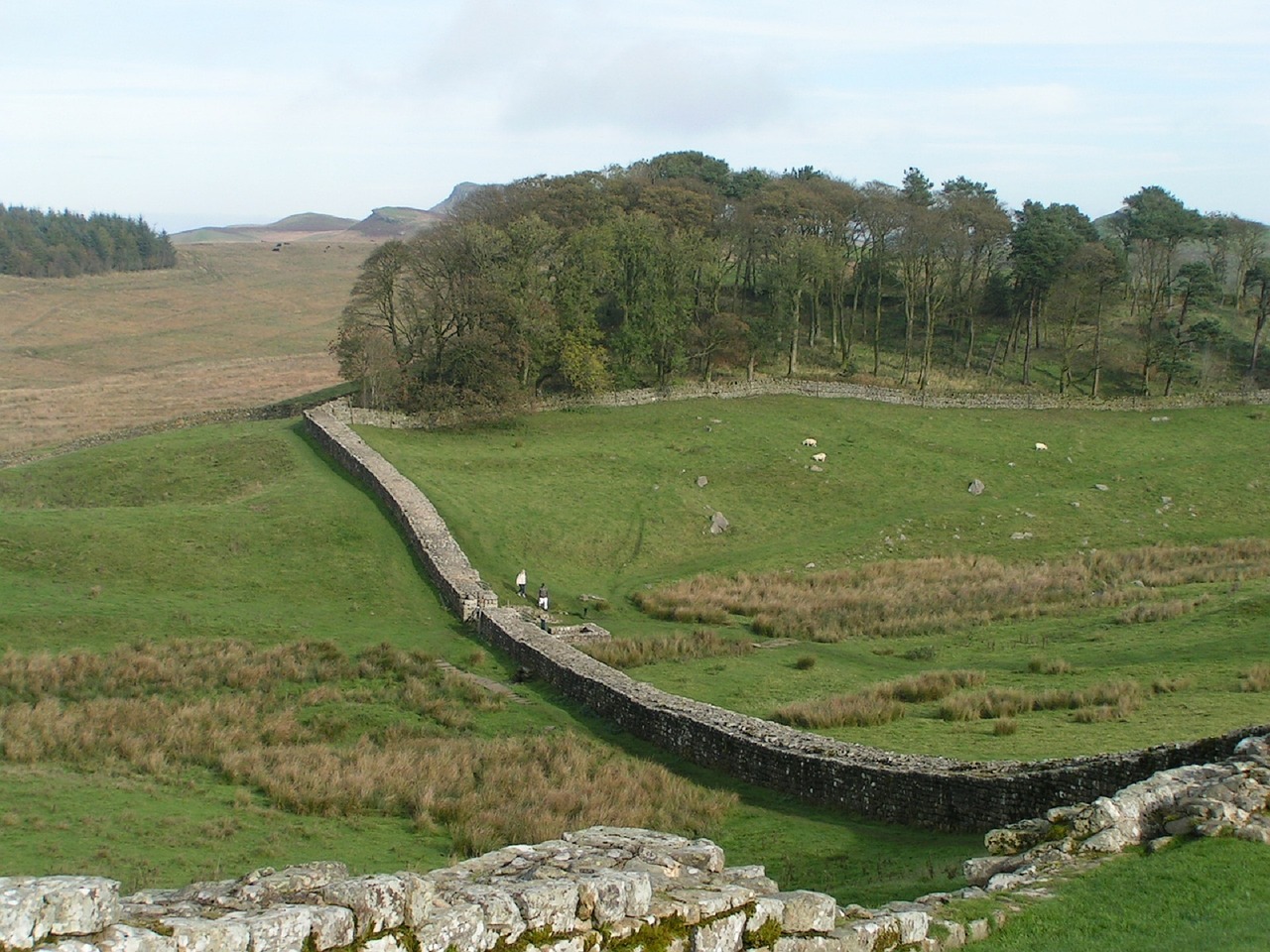 Prehistoric man left his mark on the landscape with barrows, stone circles, like the one at Duddo and the enigmatic cup and ring rock carvings around Doddington. The herd of wild white cattle at Chillingham Castle are descendants of the prehistoric wild oxen that once roamed Britain.
Prehistoric man left his mark on the landscape with barrows, stone circles, like the one at Duddo and the enigmatic cup and ring rock carvings around Doddington. The herd of wild white cattle at Chillingham Castle are descendants of the prehistoric wild oxen that once roamed Britain.
King Arthur is reputed to be buried in a cave under Sewing Shields on Hadrian’s Wall. Sitting on the ancient stones looking across the landscape and you can almost hear his knights still waiting for the call to help Britain in its hour of need. If you do discover the cave and find King Arthur, remember to blow the bugle as well as drawing the sword to cut the garter, unlike the local farmer. King Arthur woke briefly to say:
“O Woe betide that evil day,
On which this witless wight was born,
Who drew the sword, the garter cut,
But never blew the bugle-horn.”
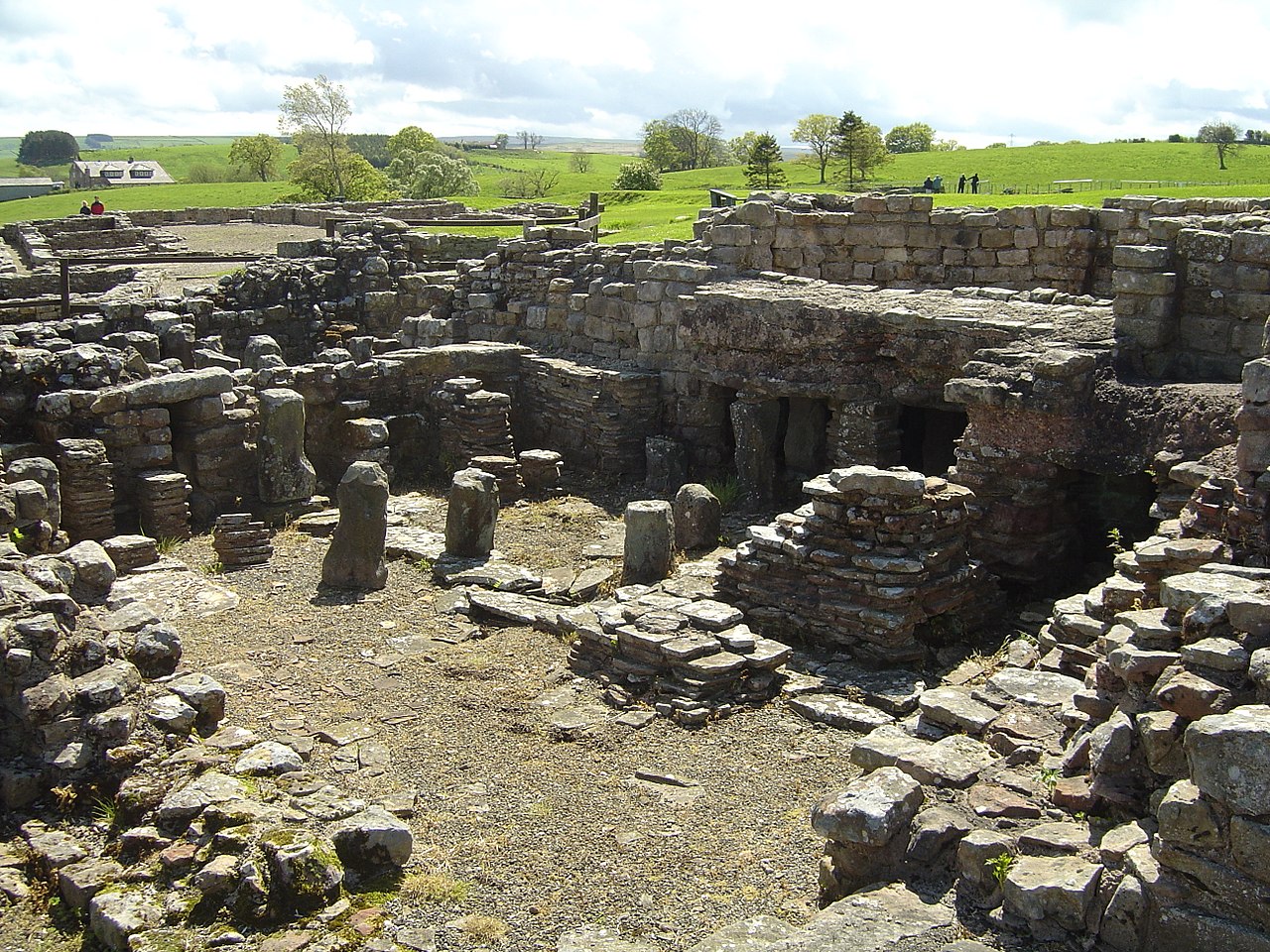 Later, the Romans stamped their authority across the region with Hadrian’s Wall, still impressive after 2000 years, as it snakes across the bleak moorland along the ridge of the whin sill. The roller coaster drive along the B6318 which follow the wall must be one of the best in the country. Housesteads with its latrines is one of the most popular forts with access to walks along the wall. You can take a bath at Chesters or admire the granaries at Corbridge. Visit Vindolanda with his huge vicus (civilian settlement) to see the reconstruction of a turret and short section of stone wall. Alternatively, play Roman soldiers at the Roman Army Museum at Carvoran.
Later, the Romans stamped their authority across the region with Hadrian’s Wall, still impressive after 2000 years, as it snakes across the bleak moorland along the ridge of the whin sill. The roller coaster drive along the B6318 which follow the wall must be one of the best in the country. Housesteads with its latrines is one of the most popular forts with access to walks along the wall. You can take a bath at Chesters or admire the granaries at Corbridge. Visit Vindolanda with his huge vicus (civilian settlement) to see the reconstruction of a turret and short section of stone wall. Alternatively, play Roman soldiers at the Roman Army Museum at Carvoran.
Roman Roads like Dere Street can be traced across the landscape and remains of smaller marching forts are still visible as lumps in the ground, as at the head of the Coquet valley.
Christianity thrived here in the Dark Ages with St Cuthbert, St Bede and St Aidan. A visit to Lindisfarne, Holy Island, across the causeway still brings a tingle to the spine. Stand in the ruins of the abbey and admire the spirit of these early saints. The Lindisfarne Gospels date from the 8thC. Now in the British Museum, they are are one of the earliest surviving copies of the Bible and the illustrations are truly mind blowing. Northumbrian dialect with its characteristic lilt and many words not found elsewhere in the English language is a direct descendent of those time.
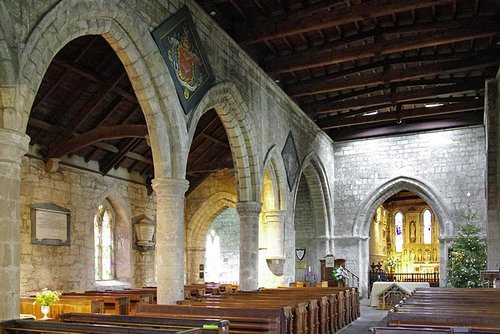 Many churches were built on the sites of the early churches and the place St Aidan died in Bamburgh is marked by a plate in the present church. St Andrew’s Church in Corbridge was built using Roman stone robbed from nearby Corstopitum. The 8thC Saxon tower has a perfect Roman archway in the church. Saxon work can be seen in many churches throughout Northumberland. Hexham Abbey has a Saxon crypt. The base of the tower of St Peter and St Paul in Longhoughton is Saxon and there is a beautiful Saxon chancel arch. St Mungo’s Church in the tiny hamlet of Simonburn has traces of 9thC stonework and is a beautiful example of an early English style church. Off the main road and hidden among the trees it really is a hidden gem.
Many churches were built on the sites of the early churches and the place St Aidan died in Bamburgh is marked by a plate in the present church. St Andrew’s Church in Corbridge was built using Roman stone robbed from nearby Corstopitum. The 8thC Saxon tower has a perfect Roman archway in the church. Saxon work can be seen in many churches throughout Northumberland. Hexham Abbey has a Saxon crypt. The base of the tower of St Peter and St Paul in Longhoughton is Saxon and there is a beautiful Saxon chancel arch. St Mungo’s Church in the tiny hamlet of Simonburn has traces of 9thC stonework and is a beautiful example of an early English style church. Off the main road and hidden among the trees it really is a hidden gem.
The Norman Conquest brought unsettled times and Northumbrian resistance lead to the harrying of the north. Control was enforced by the building of splendid castles. Alnwick Castle, still the home of the Dukes of Northumberland dates from this time. Bamburgh standing on the harder rock of the Whin Sill is one of the iconic images of Northumberland. Other Norman castles are now ruined like Warkworth, stronghold of the Percy Family and Harry Hotspur. The proud ruins of Dunstanburgh with its links to John of Gaunt stand silhouetted against the sky, reached by a short walk along the cliffs from Craster. You can almost hear his words from Shakespeare resonating round the landscape:
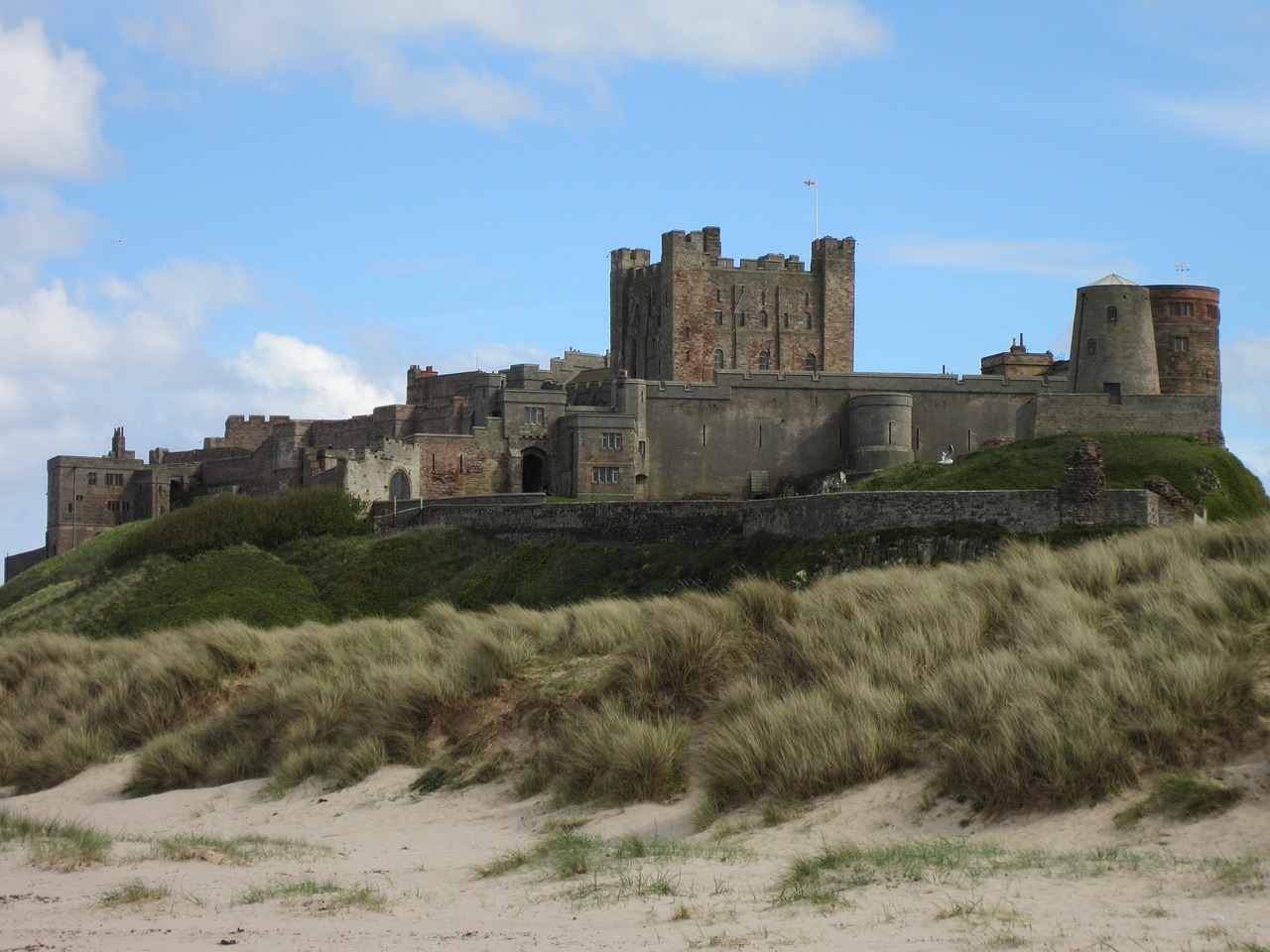 “This blessed plot, this earth, this realm, this England,”
“This blessed plot, this earth, this realm, this England,”
The Middle Ages was the time of the Border Reivers and ‘the Debatable Lands’. Times were uncertain and family loyalties strong. Armstrong, Charlton, Ridley and Robson are still important family names. Livestock rustling was rife. When food supplies were running out, the lord of the family would be presented with a spur served on a dish as a hint it was time to go stealing cattle again.
The remains of their fortified peles and bastle houses can be seen throughout Northumberland. Designed with thick stone walls, animals were kept in the ground floor with family accommodation above. Peles are small tower houses and there are good examples at Corbridge and Elsdon. Bastles were larger buildings. Over the years many of these have been modified and restored and some are still lived in, like the ones in the tiny settlement of Gatehouse in the Tarset valley. Others are now ruins like Black Middens, also in the Tarset valley or Woodhouse Bastle near Holystone, which has been restored as an historic building.
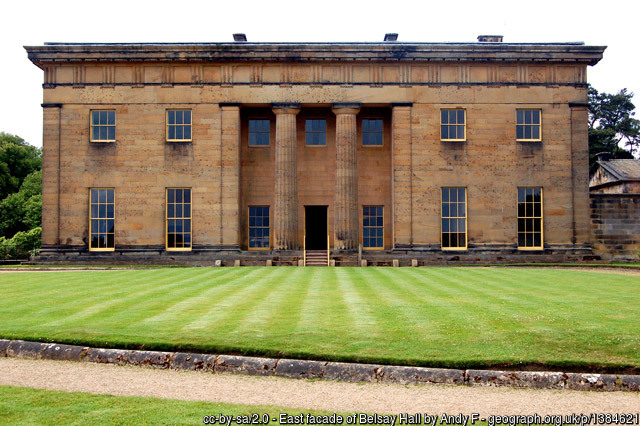 After the Union of the crowns, times became more settled and the peles and bastles were no longer needed. Many became incorporated into larger and more comfortable homes, like the old vicarage at Embledon and, on a grander scale, Chipchase and Featherstone Castles. Many of the larger houses are still lived in by the original Border Reivers families like the Charltons at Hesleyside Hall.
After the Union of the crowns, times became more settled and the peles and bastles were no longer needed. Many became incorporated into larger and more comfortable homes, like the old vicarage at Embledon and, on a grander scale, Chipchase and Featherstone Castles. Many of the larger houses are still lived in by the original Border Reivers families like the Charltons at Hesleyside Hall.
Belsay makes an interesting visit, with the remains of the massive 14thC pele next to the later Jacobean mansion, lived in until the beginning of the 19thC when the family moved into the newly built neoclassical, and much more comfortable, Belsay Hall. Also ruined, this still gives an impression of the grand life in a huge house, where the servants quarters took up more space than the family areas.
Many of these large houses still survive throughout Northumberland, like Wallington and Howick Hall although some are now upmarket hotels.
The town of Berwick on Tweed with its magnificent Elizabethan walls, changed hands many times and in the 16thC was given the status of ‘being in the Kingdom of England but not in it’. This meant it needed special mention in all royal proclamations. Its name was included in the declaration of the Crimean War but not on the peace treaty which technically left the town still at war with Russia. A peace treaty was finally signed in 1966 when a Russian diplomat visited the town.
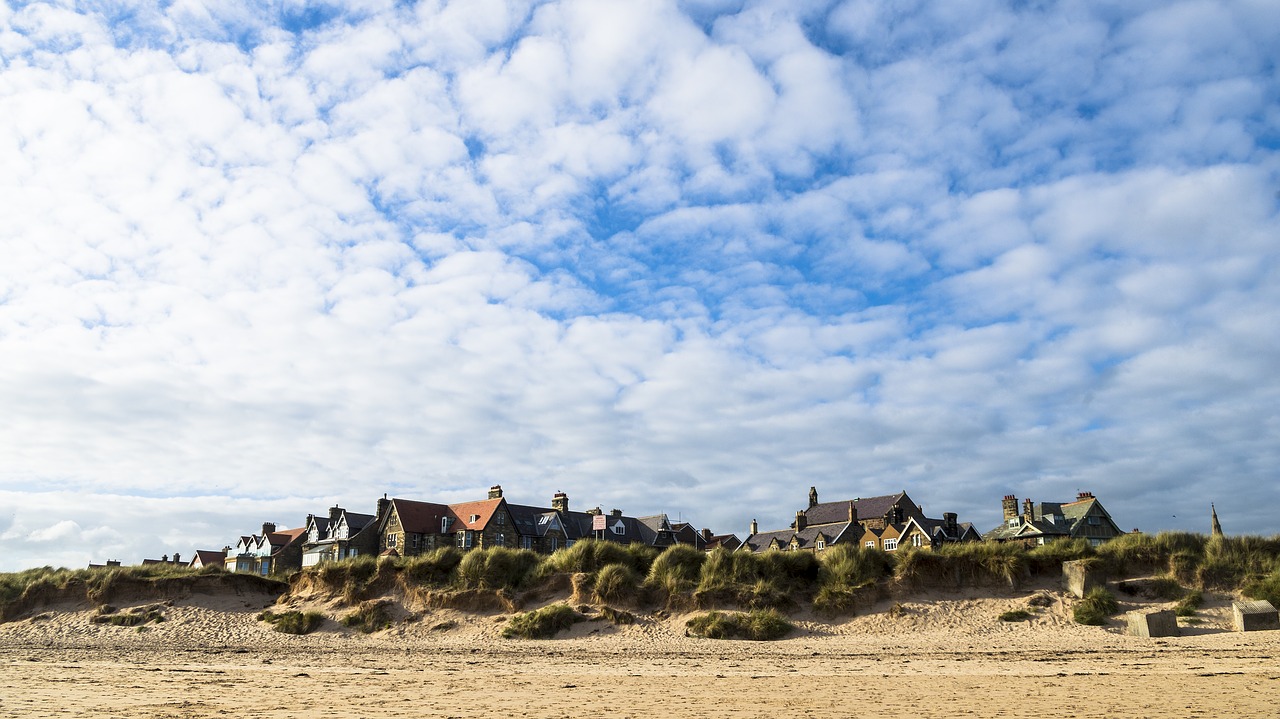 In the 19thC Northumberland was in the forefront of the development of Railways. George Stephenson who designed the Rocket, was born at Wylam and his house now belongs to the National Trust. He was responsible for the modern railway gauge of 4’ 8 1/2”. If you believe the legend, he chose this figure as it was the width of wheel tracks gouged in the stones of the gateway at Housesteads Roman Fort. More prosaically he probably measured the distance between the wheels of a traditional farm cart. Lines like the Tyne Valley line were among the first to be built in England and many others soon followed. Few survived the Beeching cuts and the Alston branch line was one of the last to be closed in 1976. The top end of the line has been reopened as the popular Tyne Valley Railway. The rest of the line, including the superbly restored Lamley viaduct, is now a footpath. There are also plans to reopen the closed Alnwick branch.
In the 19thC Northumberland was in the forefront of the development of Railways. George Stephenson who designed the Rocket, was born at Wylam and his house now belongs to the National Trust. He was responsible for the modern railway gauge of 4’ 8 1/2”. If you believe the legend, he chose this figure as it was the width of wheel tracks gouged in the stones of the gateway at Housesteads Roman Fort. More prosaically he probably measured the distance between the wheels of a traditional farm cart. Lines like the Tyne Valley line were among the first to be built in England and many others soon followed. Few survived the Beeching cuts and the Alston branch line was one of the last to be closed in 1976. The top end of the line has been reopened as the popular Tyne Valley Railway. The rest of the line, including the superbly restored Lamley viaduct, is now a footpath. There are also plans to reopen the closed Alnwick branch.
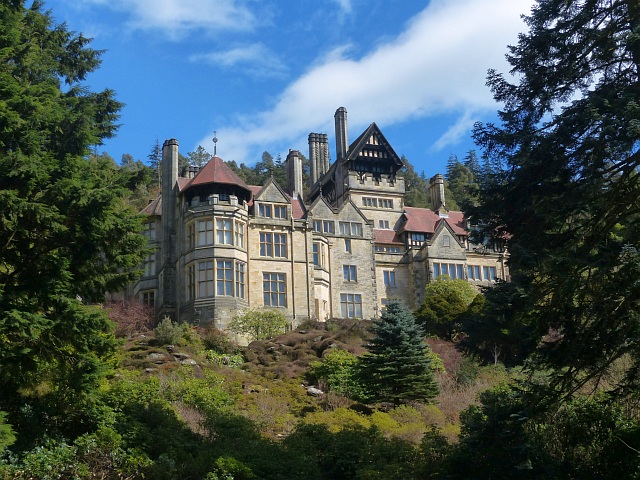 Cragside, near Rothbury, home of wealthy industrialist William Armstrong, built in 1863 was the first house in the world to be lit by electricity generated by a small hydroelectric plant in the grounds. The house was a showcase of Armstrong’s ingenuity. He devised a system of warm air ventilation and later installed an early form of central heating using hot water fed through a series of pipe coil heaters and radiators. There is a trail around the grounds exploring his industrial engineering and visiting the turbines and the power house which pumped water to a reservoir high above the house.
Cragside, near Rothbury, home of wealthy industrialist William Armstrong, built in 1863 was the first house in the world to be lit by electricity generated by a small hydroelectric plant in the grounds. The house was a showcase of Armstrong’s ingenuity. He devised a system of warm air ventilation and later installed an early form of central heating using hot water fed through a series of pipe coil heaters and radiators. There is a trail around the grounds exploring his industrial engineering and visiting the turbines and the power house which pumped water to a reservoir high above the house.
As well as plenty of history, there is some of the best walking in England to be found in Northumberland. For long distance walkers, the Pennine Way crosses the Cheviots before ending across the border at Kirk Yetholm. The Hadrian Wall Path is a glorious walk along the length of the Roman wall through some of the best scenery in England. The Northumberland Coastal Path takes you past sand dunes and pristine sandy beaches with hardly a soul to be seen, splendid castles and views of the Farne Islands and Lindisfarne. St Cuthbert’s Way starts from Melrose, across the border in Scotland and ends at Lindisfarne. There are cracking day walks in the Simonside hills, College Valley as well as the North Tyne with Kielder Water, the largest man-made lake with a range of water sports and Kielder Forest the largest man-made forest.
